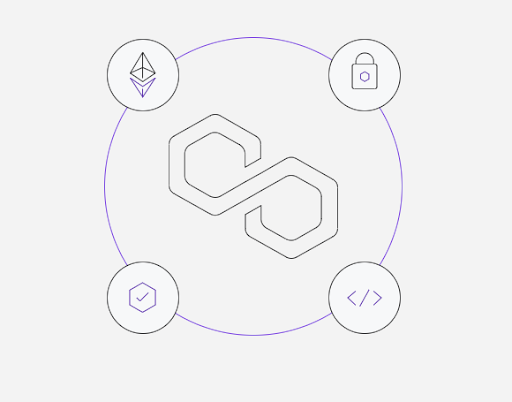Polygon is the first well-structured, easy-to-use platform for Ethereum scaling and infrastructure development
2022-01-19 10:45:40
Founded in 2017 with the original name Matic Network, Polygon is based and developed in India by three founders, Jaynti Kanani, Sandeep Nailwal and Anurag Arjun. The development team raised 5.6 million dollars through an IEO back in April 2019. After two years of working, the mainnet of Polygon was finally available in mid-2020.
It should be noted that Polygon is a sidechain for Ethereum and it has been created to offer network secure, scalable and instant transactions. With increasing demand and congestion, simple transactions are costing an average fee of above $20 on the Ethernet network and more complicated transactions can go nearer to $100. Polygon was here to fix the problem.
Partnered with GameFi project Decentraland and other blockchain projects including Maker DAO and Chainlink, Polygon has been relatively resilient during this recent “crypto turbulence.”
What is Polygon?
Sparked by the NFT frenzy and DeFi craze, Ethereum grows in popularity and more users complain about the over-the-top gas fee. Needless to say, scaling is a real pain for all the “gas fee payers” and does not bode well for future adoption of Ethereum. Ethereum 2.0 is supposed to fix the congestion issue. However, the launch date of Ethereum 2.0 has been postponed to later this year. Therefore, lots of layer 2 solutions have sprung out.
Layer 2 Solutions
Layer 2 solutions are designed to help Ethereum scale by handling transactions off the main Layer 1 Ethereum chain. Using smart contracts, on-chain transactions are delegated to side chains to extend utility and ease “the traffic jam”.
A proof-of-stake(PoS) network, Polygon is one of the Ethereum-based Layer 2 scaling solutions. It simply means that Polygan helps Ethereum handle more transactions by processing them on various new “side chains.”
This frees up some space on Ethereum and is similar to how multi-chain projects like Polkadot and Cosmos are structured. All of the transactions on Polygon are bundled together, checked for validity and then written to the Ethereum main chain which also provides Polygon with robust security and blockchain integrity.
How Does Polygon Work?
If an Ethereum user wants to use Polygon, they lock up ERC20 tokens in a smart contract. Then the Polygon network verifies that the coins are in the smart contract before minting a corresponding number of tokens on the Polygon network. The user is given access to the tokens on Polygon and they can use them to interact with any dApps built on the network. If a user would like to exit the network, their Polygon-based tokens are burned and the smart contract on Ethereum releases the user’s ERC20 tokens.
In theory, Polygon should be able to operate 65,000 transactions per second. Polygon is particularly helpful for the many dApps that are built on Ethereum. Decentralized Apps such as Aave and Sushiswap are growing in popularity but at one stage this popularity was tested by the high gas fees. Now, both Sushi and Aave are among the popular DeFi Apps that have been built on Polygon with its flexible Polygon software development kit (SDK).
SDK makes it easy for developers to bring over their dApps and start interacting with the Ethereum blockchain for a fraction of the price. However, a question that has been asked among the investors is what would happen after the Ethereum 2.0 rollout?
The Native Token $MATIC
The primary function of the MATIC token is for staking. Users who would like to support the Polygon’s PoS consensus mechanism in exchange for rewards in MATIC can delegate their tokens to Polygon validators via Metamask. Since MATIC staking happens on the Ethereum blockchain instead of the Polygon mainnet, the required transaction fees are payable in ETH not MATIC.
The MATIC token is used to participate in the governance of the network as well via Polygon Improvement Proposals (PIP). Users of Polygon side chains can pay transaction fees in MATIC and use it to settle payments within the Polygon ecosystem. As more and more dApps are being built on Polygon, the utility of MATIC is growing gradually.
The $MATIC Coin
While the total cap of MATIC is 10 billion, around 7.31 billion of them are now in circulation. According to CoinMarketCap, MATIC is ranked 13 by market capitalization with the value of $2.16 in mid January.